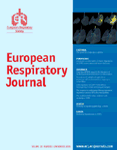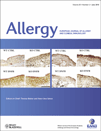Phase Two Findings
The inclusion of objective markers of allergic sensitisation, bronchial responsiveness and flexural dermatitis in ISAAC Phase Two enabled the description of international variations in disease prevalence beyond the level measured in Phase One by core questionnaires. Markers of disease have also been related to individual exposure to environmental factors and genetic markers.
The role of allergic sensitisation in disease
The first set of Phase Two publications investigated the role of atopy (as measured by positive allergen skin prick tests) in asthma [Weinmayr 2007], rhinoconjunctivitis [Weinmayr 2008] and eczema [Flohr 2008]. At the level of individual children, the association of atopy with each of these diseases was stronger in more affluent centres than in less affluent centres. At the level of whole populations (centres), however, the correlation between the prevalence of atopy and the prevalence of symptoms for each disease was weak or non-existent.
Thus, international variations in the prevalence of atopy did not explain much of the between-centre variations in disease prevalence, whereas within centres, a highly variable proportion of symptoms of asthma, rhinoconjunctivitis or eczema was statistically attributable to atopy: this proportion being greater in more affluent centres than in less affluent centres. These findings, across diverse study centres worldwide, suggest that much asthma, rhinoconjunctivitis and eczema has a non-allergic basis, especially in developing countries.
Objective markers v questionnaire measures
A second set of papers addressed the correlations between objective markers and the corresponding questionnaire measures of disease. At the level of whole populations, the correlation between prevalences of examined and reported flexural dermatitis was high, offering reassurance that ISAAC questionnaire-derived prevalence data for eczema are sufficiently precise for comparisons between populations [Flohr 2009].
In contrast, high rates of bronchial responsiveness to inhaled hypertonic saline challenge were not confined to centres with high prevalences of asthma symptoms, nor to affluent countries. At the individual level, the association between wheeze and BHR differed across centres but this heterogeneity could be largely explained by a stronger association with wheeze in atopic children than in non-atopic children [Buchele 2010]. “Downregulation” of local inflammatory responsiveness had previously been proposed to explain a low prevalence of positive skin prick tests (SPTs) in less affluent countries. Analyses of the inter-relationships of SPTs, total and allergen-specific IgE in Phase Two centres with diverse living conditions found no support for this hypothesis [Weinmayr 2010].
Environmental and lifestyle risk factors
A third set of papers investigated known or suspected risk factors for asthma or allergy. Endotoxin (bacterial products) has been suggested as both a trigger of asthma and a protective factor against allergic sensitisation. Living room floor dust was collected and analysed for endotoxin in six centres from Albania, Italy, New Zealand, Sweden and the United Kingdom. Asthma and current wheeze were more common in homes with lower endotoxin levels, and there was a less consistent inverse association of endotoxin levels with allergic sensitisation [Gehring 2008].
More frequent consumption of fruit, vegetables and fish was associated with a lower prevalence of wheeze and asthma, whereas high burger consumption was associated with higher lifetime asthma prevalence. None of the food items studied was associated with allergic sensitisation. Except for fruit juice and fruit consumption, no associations were found with atopic wheeze. These results support previous suggestions that adherence to the ‘Mediterranean diet’ may provide some protection against wheeze and asthma in childhood [Nagel 2010].
Genetic risk factors
Early genetic studies within Phase Two focused on 55 candidate single nucleotide polymorphisms (SNPs) in 14 genes that had been associated with asthma or allergy in the published literature up to 2003 [Genuneit 2009]. Significant associations with wheeze were detected in only four genes (IL4R, TLR4, MS4A2, TLR9). Variants in IL4R and TLR4 were also related to allergen-specific IgE, while polymorphisms in FCER1B (MS4A2) and TLR9 were not. There were also highly significant associations between SPINK5 variants and visible eczema (but not IgE levels) and between IL13 variants and total IgE. Heterogeneity of these genetic effects across centres was rare, despite differences in allele frequencies.
These findings suggest that, despite the biological plausibility of IgE-related mechanisms in asthma, genetic evidence of this pathway is sparse. This conclusion was borne out by the larger collaborative analysis conducted by the GABRIEL consortium [Moffatt 2010], of which ISAAC is a partner. Studies of possible interactions between genetic variants and non-genetic risk factors are currently being pursued as part of the GABRIEL work programme.










